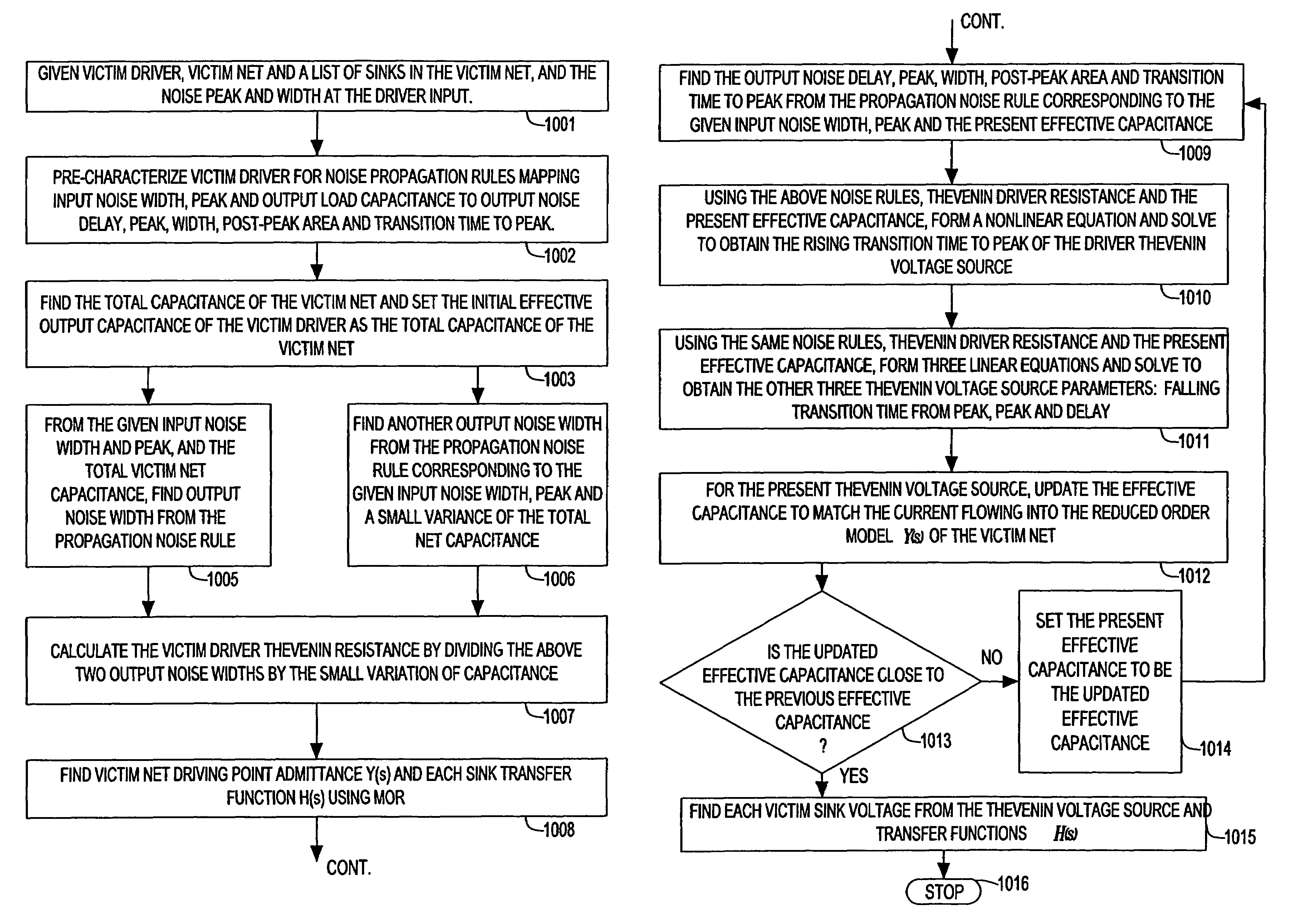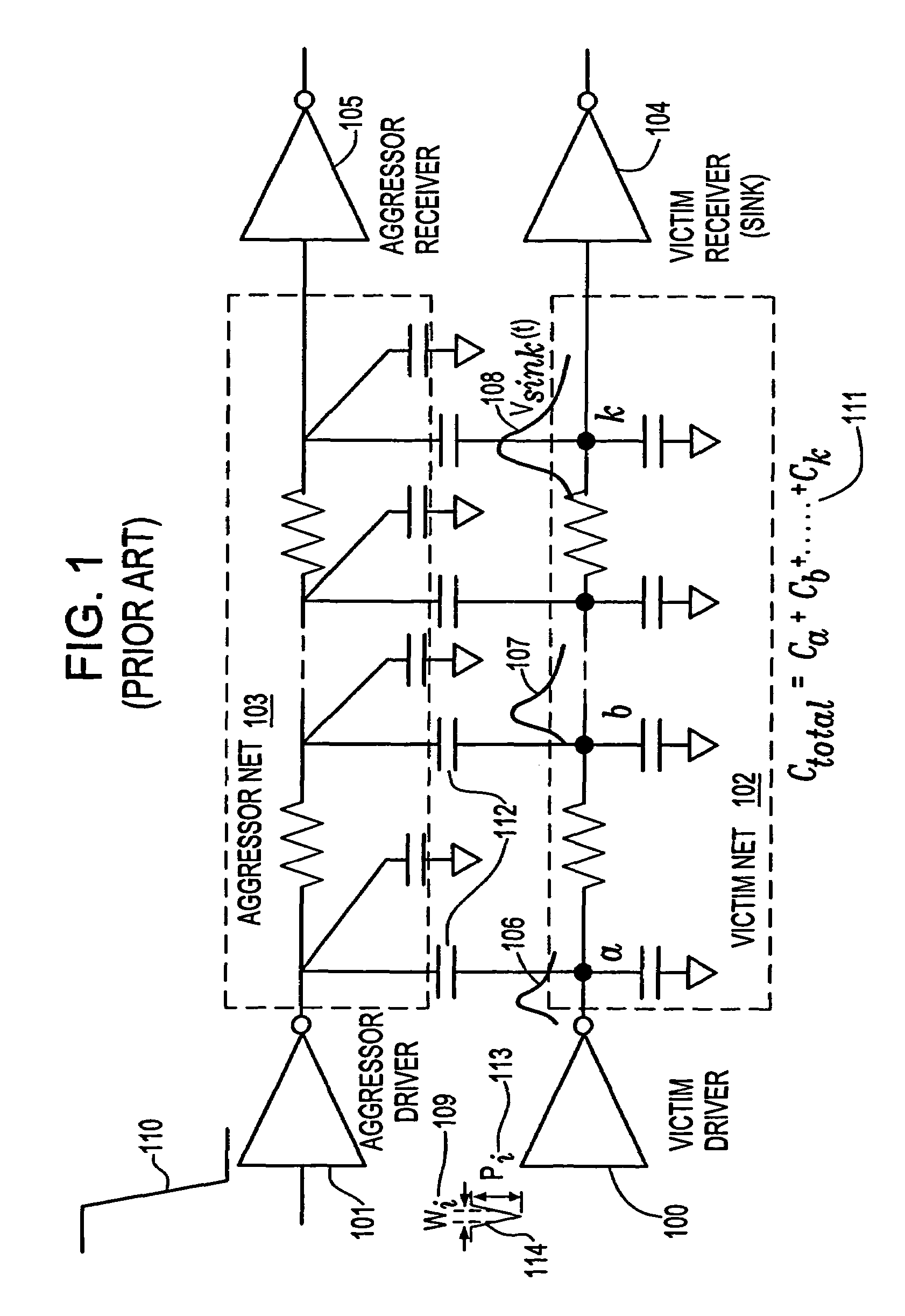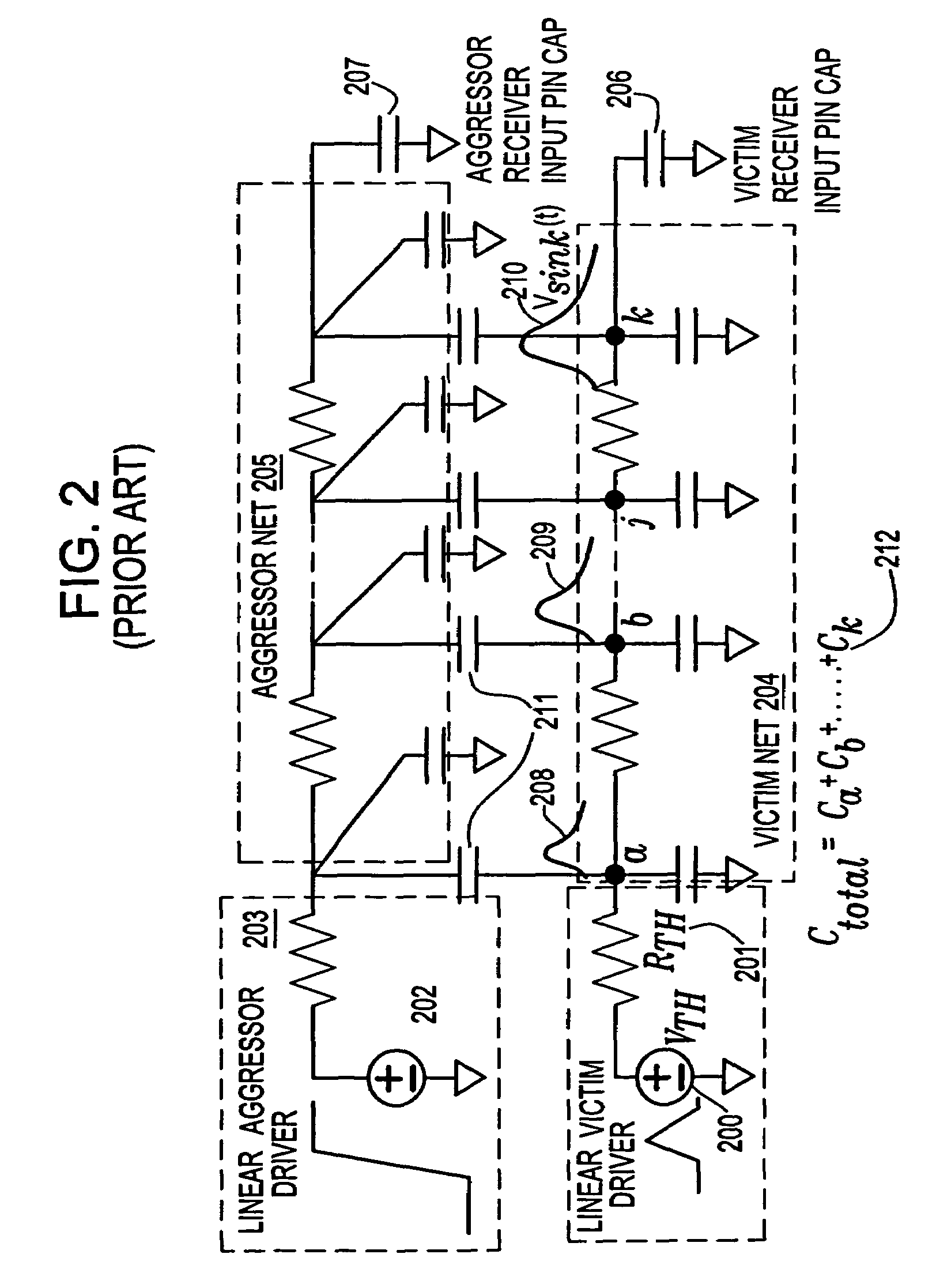Method for estimating propagation noise based on effective capacitance in an integrated circuit chip
a technology of effective capacitance and propagation noise, applied in the direction of instruments, computing, electric digital data processing, etc., can solve the problems of increasing noise in digital integrated circuits (ics), difficult to model the non-linear behavior of gates using a simple linear model, and usually impractically slow to directly analyze the global signal net. achieve the effect of improving the accuracy of existing noise analysis tools
- Summary
- Abstract
- Description
- Claims
- Application Information
AI Technical Summary
Benefits of technology
Problems solved by technology
Method used
Image
Examples
example
[0115]Referring now to FIG. 10, a circuit typicaly found in a digital VLSI chip is shown and will be used to illustrate various aspects of the invention.
[0116]L1 and L2 are latches and G1, G2, and G3 are combinational logic gates. RLC wires N1, N2, N3, and N4 interconnect the latches and the gates with each other. L1 is clocked by clock C1, and L2 by clock C2. The clocking scheme is shown to the right of the figure. Data is launched from latch L1 at the edge E1 of C1, and after passing through gate G1, it is captured by latch L2 at clock edge E3 of C2. Simultaneously, the data after passing through G2 and G3 is captured by latch L1 at the edge E2 of C1. Also shown, are wires that run adjacent to N1, N2 and N4 denoted by P1, P2, P3 and P4, respectively. These adjacent wires have both capacitive and inductive coupling to N1, N2 and N4. Therefore, any signal transitions on these adjacent wires induce noise which interferes with the data launched by L1, forcing incorrect data to be capt...
PUM
 Login to View More
Login to View More Abstract
Description
Claims
Application Information
 Login to View More
Login to View More - R&D
- Intellectual Property
- Life Sciences
- Materials
- Tech Scout
- Unparalleled Data Quality
- Higher Quality Content
- 60% Fewer Hallucinations
Browse by: Latest US Patents, China's latest patents, Technical Efficacy Thesaurus, Application Domain, Technology Topic, Popular Technical Reports.
© 2025 PatSnap. All rights reserved.Legal|Privacy policy|Modern Slavery Act Transparency Statement|Sitemap|About US| Contact US: help@patsnap.com



